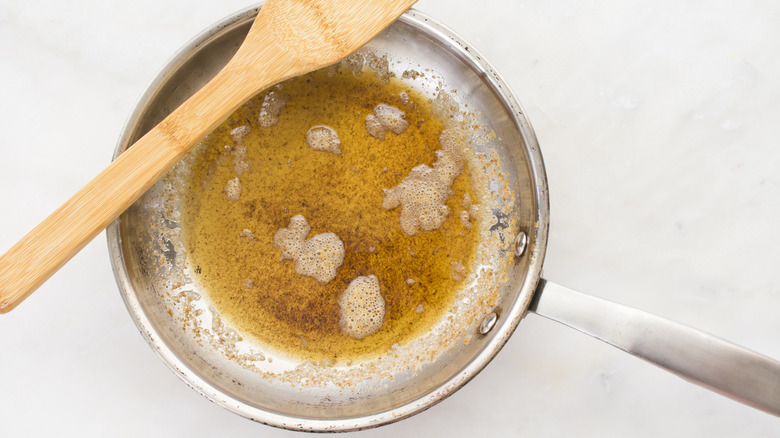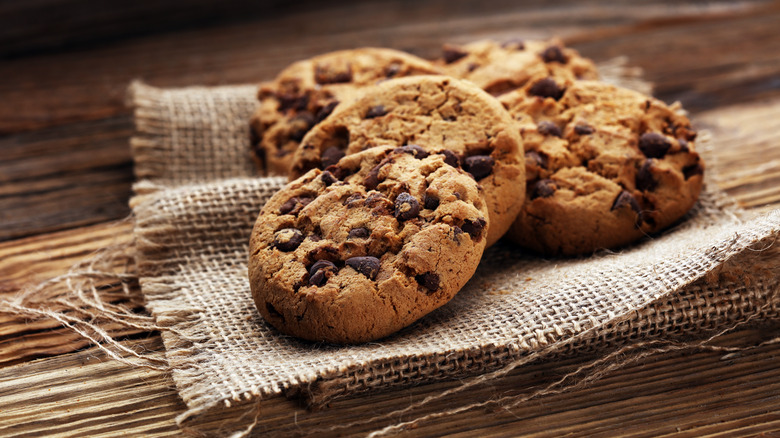The Secret To Baking With Brown Butter Without Compromising Texture
Brown butter (or browned butter) is a magical ingredient. Its caramelized, nutty flavor adds such depth to foods that it seems like it's 50 ingredients instead of one.
There's browned butter frosting, brown butter ice cream, and browned butter sauces that may or may not include herbs. It's delicious with shrimp, scallops, chicken, and steak, or drizzled over roasted broccoli or cauliflower. You can toss gnocchi with smoky browned butter or make seared scallops with brown butter and chive sauce for a special dinner. But have you ever used browned butter in baked goods?
You can bake with browned butter, as long as you follow a few rules and treat browned butter differently. You can't just pour brown butter into a dish and stir up the batter. Browning the butter changes some of the characteristics of this fat that are necessary to make light and fluffy cakes, cookies, and more.
A bit of baking science
To understand why you have to fiddle with the recipe (and the butter itself) before you can use brown butter to make a cake, you have to know about butter's function in recipes. The fat adds flavor, texture, and moisture, but another important purpose is to make the recipe light and airy, per the Institute of Culinary Education. Most cake recipes call for beating sugar into butter as the first step. There's a reason for that.
The sugar crystals cut tiny holes in the fat, explains the Chicago Tribune. Those holes fill with carbon dioxide from baking powder when the batter or dough rises in the oven, adds MasterClass. Without those little holes, cakes and cookies will be dense and heavy. Also, browning butter removes the water from the fat; it evaporates as the butter cooks, according to Science of Cooking. While this isn't a problem for a sauce, it is in a batter. You need to replace that liquid when you make the recipe.
To use browned butter in a cake recipe, after it's nicely browned, chill it until the mixture is solid, per Baker Bettie. That way, you'll still get the nice little pockets of air when you cream the sugar with the fat. Then, add about a tablespoon more liquid (water or milk) to the batter for each 1/2 cup of butter to replace the water that's lost while the butter browns, advises Sally's Baking Addiction.
Chill your brown butter and get baking
Because there's little water in browned butter, it will become hard in the fridge. You'll need to remove it about an hour before you start baking so it softens enough to be workable, explains King Arthur Flour.
Alternatively, you can chill it for 45 minutes to an hour — until it's set but still soft enough to cream, per Southern Living. Land O'Lakes says you can freeze browned butter for 30 minutes before you start mixing, and it will be the perfect texture.
Now, what are you going to bake? Try chocolate chip cookies, which will be rich with caramel and toasted flavors. Brown-butter gingerbread recipes use the butter without chilling it first for a dense, fudgy texture (whipped eggs provide the air bubbles), while brown butter pecan pie is pure decadence. When cherries are in season, try a brown butter cherry tart recipe.


